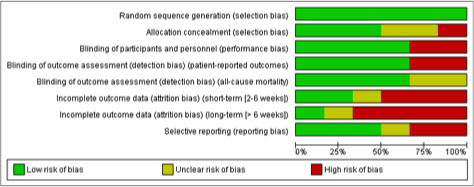PEN eNews 2(5) February 2013
PEN
® eNews is a monthly e-newsletter shared with the global PEN Community and created to help dietitians position themselves as leaders in evidence-based nutrition practice. In addition, users of the PEN System will find articles on the new evidence, resources and features available and how to maximize one's use of PEN.

Biggest frustration?
What is your biggest frustration as a dietitian? This is a question we asked our social media followers via Twitter, Facebook and on LinkedIn. We heard from many of you - the constant confusion with nutritionists, the belief that nutritionists have better, more “holistic” information that is more trustworthy [than the advice offered by a dietitian]; having our job done by someone trained “a little bit” in dietetics; not being valued as a key member of the interdisciplinary team with expertise and specialization in a unique scientific field.

We, as dietitians, have our work cut out for us. We swim upstream against a current of advice around nutrition not always based on evidence, we compete for limited resources from our employer/clients, we compete against the “branding” of other nutrition professionals. We are forever assessing and questioning the information coming at us, filtering what will impact our practice and translating science into digestible chunks for those with whom we work. The result of this work is that we are forever differentiating our brand as dietitians and as a profession worth listening to.
In this edition of eNews 2(5), we have articles that help you differentiate your dietetic voice. How much should I believe the result explores the role of bias in research and ways to evaluate the risk of bias in research. How Do I…..Use Evidence Clips explains how these news clips provide a synthesis of information about a hot topic in nutrition. We highlight some surprising findings from the research in 2012 and how the process of systematic inquiry helps to shape what we know. This and more in eNews 2(5).
Kristyn Hall MSc, RD
Editor, PEN eNews
What's New in PEN
New in PEN!! Our Table of Contents!Have you seen PEN’s revised Table of Contents? Designed with you in mind, it has been re-formatted to help you quickly find the answers to your practice based questions, and locate and access specific knowledge objects – like backgrounds, practice guidance summaries, toolkits and resources within a knowledge pathway. New knowledge is only one click away! Have a look at
http://www.pennutrition.com/toc.aspx (PEN login required)
We want to hear your feedback to our new Table of Contents. Click here to access our short survey.
Wondering what else is new in PEN? Here is a list of our updated content in PEN, including updated knowledge pathways, new practice questions, updated practice questions, new professional tools, updated professional tools, and new client handouts available.
Updated Knowledge Pathways
Updated Practice Questions
News-making Evidence
Professional Tools
Client Tools
Updated Allergy Handouts:
Submitted by
Dawna Royall, Msc, RD, PEN Evidence Analyst Contractor
How much should I believe the result?
PEN's glossary of research definitions defines 10 different kinds of bias (http://www.pennutrition.com/docviewer.aspx?id=9465). With all of these options, how can we evaluate bias efficiently? A previous issue of PEN eNews discussed publication bias. In this article, we examine some of the other main types of bias in published research.

Bias is “a systematic error in the design, conduct or interpretation of a study that may cause a systematic deviation from the underlying truth (1).” The main types of bias occur due to systematic differences:
- between groups that are compared = selection bias
- in the care provided or exposure to factors other than the intervention = performance bias
- in withdrawals or exclusions of people entered in the study = attrition bias
- in how outcomes are assessed = detection bias
In addition, reporting bias occurs when only a biased subset of the data is available. Other sources of bias are specific to particular trial designs (e.g. carry-over in cross-over trials) or circumstances (e.g. contamination due to mixing of the experimental and control conditions for example, if participants in a vitamin study take their own vitamins).
Study Quality or Risk of Bias?
Bias can occur in either direction, resulting in an underestimation or overestimation of the
true effect, and can range from trivial to substantial. The term
risk of bias is used in Cochrane reviews (2) and in
PEN's Evidence Grading Checklist (3) to help explain variation in the results of studies, including those reported in systematic reviews (e.g. helps to explain heterogeneity of results). Assessing risk of bias establishes the degree to which results of studies should be believed. Risk of bias is distinguished from study quality, which refers to the critical appraisal of a study. Bias can occur in well-conducted studies; not all methodological flaws introduce bias.
Cochrane uses several domains to evaluate bias and encourages categorizing each domain as a low or high risk of bias (unclear risk of bias is also an option) (2). The following table shows examples that demonstrate low and high risk of bias for each of these domains.
Domains to evaluate risk of bias
|
Low risk of bias (examples)
|
High risk of bias (examples)
|
|
Random sequence generation
- method used to generate the allocation sequence / randomization
(Selection bias)
|
- random number tables
- block randomization
- low-tech (e.g. coin toss)
|
- quasi random (e.g. date of birth or ID number)
- non-random (e.g. choice of clinician or participant)
|
|
Allocation concealment
-method used to conceal the allocation sequence / randomization
(Selection bias)
|
- central allocation
- sequentially numbered sealed, opaque envelopes or identical drug containers
|
- random sequence known to staff in advance
- envelopes or packaging without safeguards
- non-random sequence
|
|
Blinding of participants and personnel
-method used to blind study participants and personnel from knowledge of the intervention
(Performance bias)
|
- blinding and unlikely that blinding could be broken
- no blinding but outcome unlikely to be influenced
|
- no blinding, incomplete blinding or broken blinding of participant or assessor, with outcome likely to be influenced
|
|
Blinding of outcome assessment
-method used to blind outcome assessors from knowledge of which intervention a participant received
(Detection bias)
|
- blinding and unlikely that blinding could be broken
- no blinding but measurement unlikely to be influenced
|
- no blinding or broken blinding and measurement likely to be influenced
- subjective outcome measure
|
Incomplete outcome data
-completeness of the outcome data for each main outcome including attrition and exclusions from analysis
(Attrition bias)
|
- no missing data
- reasons for missing data not related to outcome
- missing data balanced across groups and reasons similar
- 'intention to treat' analysis
|
- reasons for missing data related to outcome (e.g. adverse effects)
- imbalance in numbers or reasons for missing data
- 'as-treated' analysis with substantial departure from allocation
|
|
Selective reporting
-how the possibility of selective outcome reporting was examined
(Reporting bias)
|
- protocol is available and all pre-specified outcomes reported
- protocol not available, but it is clear that all pre-specified and expected outcomes of interest are reported
|
- outcomes not reported as pre-specified or expected (e.g. missing data, subsets, unexpected measurements)
- outcomes reported incompletely; outcomes cannot be entered into a meta-analysis
|
Overall risk of bias:
Drawing conclusions about the overall risk of bias within trials or across trials, means summarizing assessments for each outcome, and deciding which domains are most important in the context of the research question being asked. 
Within a trial, a low risk of bias generally means that a low risk of bias was identified for all of the key domains; a high risk of bias within a trial generally means that a high risk of bias was identified for one or more key domains. For systematic reviews, a low risk of bias means that most information is from trials at low risk of bias; a high risk of bias means that a proportion of information from trials at high risk of bias is sufficient to affect the interpretation of results.
The next time you read a trial or systematic review, consider the risk of bias and ask yourself, "How much should I believe the result?"
You don't need to be a Cochrane author or reviewer to access these tools and resources:
References available upon request
how do i...
Learn about Hot Nutrition Topics Through the News-Making Evidence Page in PEN?
As busy practitioners, knowing what is in the news and what news-making information is credible can be hard to keep up with, so PEN has developed a new knowledge feature, News-making Evidence, to assist with this process. Dietitians receive questions from consumers, clients, other health professionals and the media. Dietitians have their own practice-based question. PEN provides evidence-based answers. This new feature will assist in providing responses to hot topics in the news, helping you to provide a consistent message and practice approach. The fastest way to find the latest in News-making Evidence is to:
There you will find three types of News-making Evidence:
- Article Analysis – This is a critical appraisal of a single article that has received media attention. There are three areas covered in an Article Analysis: Study Overview; PEN Evidence Analysis; and The Bottom Line. Previously posted Article Analyses are available at List of all Article Analyses on the New-making Evidence site.
- Evidence Clip - Dietitians are often asked for their perspectives on popular nutrition topics. Evidence “clips” are short, succinct analyses of popular nutrition topics. These will replace Current Issues: The Inside Story, a quarterly topic overview publication that will have its last published article in March 2013. As with Current Issues, clips will be available in PEN attached to their most relevant Knowledge Pathway(s) and on the PEN home page under News-making Evidence.
- Other: Media Stories, Hot Topics, or Articles in the News - for example it could be a link to a new Cochrane Review that changes practice and we want PEN subscribers to be aware of it even before it gets added into appropriate PEN content. It could be a media story that will create a buzz with the public and we already have PEN content to support or refute it.
Our PEN Article Analyses and Evidence Clips will also be identified through a general search on your topic of interest. For example, if you want to know more about raspberry ketones, you can search raspberry ketones, and the
Raspberry Ketones and Weight Loss Evidence Clip will show in the All Results as a: Evidence Analysis.
We invite your feedback on this feature in PEN and any submission on a hot nutrition-related article that needs to be analyzed. Interested in preparing an article analysis or an Evidence Clip? Please let us know by choosing PEN Content in the
Contact Us menu.
Coming next issue: How do I ... Use the New PEN Toolkits in my Practice?
Written by the PEN Team
February 2013
PEN Insider
Spotlight on Heather Alaverdy

Heather Alaverdy, RD, MA
PEN Editor,
Dietitians of Canada
My role in PEN:My primary role can be explained by one word – consistency. I strive to ensure that content posted in PEN is consistent with PEN standards and style and is consistent with other content in PEN. Sometimes these efforts involve investigative work and searching as the PEN database is huge. Content is constantly being submitted for editing, so I am kept very busy!
A day in the life of the PEN Editor:
A typical day as PEN Editor is diverse, interesting and dynamic. The word editing may sound boring and tedious, but the job of PEN Editor is anything but. I do edit all the content that is submitted to PEN, but as a dietitian I find the content really interesting, especially when it challenges what I have previously thought to be true.
Biggest learning from evidence-based practice:
I have always valued evidence-based decision-making and my experiences with PEN have certainly strengthened this view. As a practitioner, I seek evidence-based information whenever possible. It is invaluable.
What impact does evidence-based practice have on nutrition and dietetics?
Evidence-based practice enhances our credibility, gives us confidence to make recommendations, advocate for individuals and issues and provide meaningful food and nutrition information. Dietitians are really valuable and basing our practice on evidence makes us even more valuable!
My favourite thing about PEN is:
Our team…it consists of a group of intelligent, passionate and hard-working individuals unified by one vision. Although we work at distance and primarily connect by phone, email and Skype, we are able to have close working relationships. Our work is serious, but we still have fun! It is very exciting to be part of the PEN journey; it has been a great ride so far.
How to reach me…
PEN’s Surprising Findings in 2012
S cience evolves. Sometimes new information turns out to be different than what we have been taught. Take hydration – many dietitians were taught that caffeine-containing beverages are dehydrating…aren’t they? Or allergies - many dietitians have been taught that, among infants with a parental history of allergy, that delaying the introduction of common allergenic foods may reduce the incidence of allergy. Does it? From research to practice, and the process of translating knowledge along the way, there are many opportunities for surprise whether it is the science itself, or people’s reactions to the information.
cience evolves. Sometimes new information turns out to be different than what we have been taught. Take hydration – many dietitians were taught that caffeine-containing beverages are dehydrating…aren’t they? Or allergies - many dietitians have been taught that, among infants with a parental history of allergy, that delaying the introduction of common allergenic foods may reduce the incidence of allergy. Does it? From research to practice, and the process of translating knowledge along the way, there are many opportunities for surprise whether it is the science itself, or people’s reactions to the information.
Reflecting back on the evidence analyses completed in 2012 – here are a few surprises noted by members of the PEN team:
Jayne Thirsk, the Director of PEN, named two surprises for her:
- Coconut water and hydration: Though coconut water is marketed as a "natural" oral hydration product, it was surprising to see that its nutrient composition is variable, mostly due to differences in plant maturity. Most analyses have found coconut water to have less sodium than sports drinks (& less than is recommended for sports drinks), more potassium & less carbohydrate. For more information, login to: http://www.pennutrition.com/KnowledgePathway.aspx?kpid=8180&pqcatid=146&pqid=19346
- I was surprised to learn of the world-wide incidence of pancreatic cancer (age adjusted rates range from 10-15 per 100,000). Pancreatic cancer accounts for 2% of cancers and is considered the 13th most common type of cancer. It is the 8th most common cause of cancer death. For more information, login to: http://www.pennutrition.com/KnowledgePathway.aspx?kpid=7700&pqcatid=144&pqid=8905
Dawna Royall, PEN Evidence Analyst Contractor noted three surprises in the area of cardiovascular nutrition:
Heather Petrie, PEN Evidence Analyst Contractor, noted these surprises:
- The amount of resistance there is in the real world to the idea of restaurant menu labelling. I thought it was interesting that there was some evidence of decreases in calories purchased after restaurant menu labelling regulations were implemented in parts of the U.S. and that most consumers reported taste, price and convenience trump nutrition for decision making at restaurants. For more information, login to: http://www.pennutrition.com/KnowledgePathway.aspx?kpid=1583&pqcatid=144&pqid=14514
- Energy drinks and alcohol - The case reports on energy drink abuse (5-10 cans a day) were startling and concerning. Also interesting were the reasons surveyed young adults gave for mixing alcohol and energy drinks and the side-effects they self-reported. For more information, http://www.pennutrition.com/docviewer.aspx?id=9886
Heather Alaverdy, PEN Editor, and the team member who has read and reviewed every single PEN practice question, had this to say:
Sue Firus, PEN Evidence Analyst Contractor, said this:
Science continues, knowledge expands, practice evolves – as regulated evidence-based health professionals, dietitians retain their authority as food and nutrition experts.
Let’s return to our original question - does caffeine stimulate diuresis and negatively impact fluid balance among healthy adults? No. The majority of better-designed trials consistently did not find caffeine doses of ≤225 mg (equivalent to 1-2 cups of coffee or 5-6 cups of black tea or 4-5 cans of cola) to cause diuresis (promote urine formation). Occasionally, higher doses of caffeine (240-640 mg) promoted diuresis in some individuals. But, even when diuresis was observed, it did not lead to dehydration over hours or days of observation. For more information, login to:
http://www.pennutrition.com/KnowledgePathway.aspx?kpid=1029&pqcatid=146&pqid=19692
What new findings surprise you?
Compiled by Kristyn Hall, MSc, RD, PEN eNews Editor
Social Media: Dialling into the Digital Age Part V
Highlights of this article have been drawn from the Dietitians Association of Australia’s, ‘Dialling into the digital age: Guidance on social media for DAA members’ resource (2011). Authored by Emma Stirling, and DAA Reference Group members Catherine Saxelby, Zoe Nicholson, Tara Diversi, Sally Johnston, Lisa Simpson, Maree Garside, and Frances Gilham.
PEN Social Media Tip #5: Jump on Now.
Now is the right time to make a start in social media. Aim to:
- Secure your preferred name or handles now, on a range of social media accounts. Most accounts are free to establish and you can leave these dormant until you’re ready.
- Be a passive listener and watcher for a while, to get a feel for the space. Use a free tool, such as Google Reader, to monitor online mentions of your chosen key words.
- Start to read and comment on a range of different blogs. Follow the Nutrition Blog Network – powered by dietitians www.nutritionblognetwork.com. Join up if you are a dietitian and establish your own blog.
- Define your niche in the “about” or “info” sections, as well as your credentials, in all of your social media accounts.
- Ensure you are able to keep your blog or social media updated regularly. Pick a platform that matches with your time input.
- Link to other dietitians and “like” and “follow” their blogs and social media accounts. And promote other dietitian’s content and provide consistent messages together, especially when nutrition myths arise.
- Support and promote content you “like” on your national dietetic association’s social media pages.
- Tweet and post about the conferences and events you attend to share with others. Ask conference organisers about a Twitter hashtag.
- Network outside the dietetics profession and promote positive, credible nutrition messages. Be helpful and offer solutions.
- Talk to other dietitians or nutritionists in the know or set up a mini-mentoring arrangement with someone who is social-media savvy.
- Look out for professional development opportunities in social media through PEN and your national dietetic association.
- Get your how-to guides and tips by searching online, rather than in a book, which will be out of date by the time it’s published.
- Set yourself some personal boundaries to maintain a healthy balance – social media is easily addictive! Put down those thumbs during face-to-face social events.
- Be fearless of social media. It’s just a different vehicle to learn to drive, and dietitians are fast learners! You already have the upper hand on the social network – you’re an expert in nutrition.
Stay tuned for Tip #6 in the next PEN eNews 2(6).
Student Corner: Since the Beginning of Time….
…dietetic students and interns have been contributing to PEN. Well maybe not since the beginning of time…. but within a year of launching PEN we had dietetic interns contributing to PEN content thanks to Judy Dewolfe who attended a PEN presentation given to the Dietetic Educators group at the 2005 DC conference. This was three months before PEN was launched and we proposed students / interns could get involved in writing content according to the PEN evidence-based cycle in order to meet dietetic competencies. By the time I returned from the DC conference, Judy, who at the time was the coordinator of the KFL&A Public Health (Kingston, Ontario, Canada) Internship program, had emailed me wanting to know what needed to happen to get her interns involved in writing for PEN.
The Kingston interns were the first but since then there have been many more dietetic students and interns across Canada and the PEN projects have met a variety of program objectives. Since 2006 we have:
- worked with an average of 5-6 dietetic interns every year over an 8 month period,
- several universities have used and continue to use PEN processes for student assignments in nutrition classes, and
- we have had 5 PEN Master’s projects either relating to evaluation or development of PEN knowledge pathways.
This year, we received a new request from three dietetic students looking for a volunteer experience to contribute to PEN content. All student content that gets posted in PEN undergoes the same external review by topic experts as all content does and students are acknowledged in the PEN database for their contributions.
Since September 2012 we have been working with a record number of Canadian dietetic students and interns:
- University of Moncton – 17 students – class assignment
- McGill University – 2 dietetic stagiares (interns) – Community rotation
- McGill University – 3 students - Applied Master’s project
- University of Alberta – 6 students – research project
- University of Guelph – 3 students – Applied Master’s project
- Brescia University College – Food Management Class assignment
Dietetic intern research projects:
- Saskatoon Health Region (Saskatoon, Saskatchewan) – 4 interns
- KFL&A Public Health (Kingston, Ontario) – 3 interns
- University Health Center (Toronto, Ontario) – 7 interns
- Sunnybrook (Toronto, Ontario) – 2 interns
- North York (Toronto, Ontario) – 4 interns
- London Health Sciences (London, Ontario) – 4 interns
Until recently our involvement has been with Canadian universities and internship programs. We have just started working with Dr. Yasmine Probst at the University of Wollongong, New South Wales, Australia who is using aspects of the PEN process to have students answer PEN submitted questions as an assignment in their research methods course. We are excited to be working with her and hope it leads to more student engagement in other partner countries.
Lots of young dietitians out there have had the “PEN experience”. You may have seen some of their comments about the experience in this section in previous PEN eNews issues. Getting students involved is rewarding for us, but more importantly, for them.
Please contact any member of the PEN team to see how you might get your dietetic students / interns get involved in the PEN process.
- British Universities can contact Sue Kellie, Head of Education and Professional Development at the British Dietetic Association if they are keen to get involved.
- Australian Universities can contact Bree Murray, Professional Services Dietitian at the Dietitians Association of Australia.
- Canadian Universities can contact Jane Bellman, Kerri Staden, PEN Resource Managers, and Beth Armour, PEN Content Manager.
Become a Peer Reviewer for Cochrane Systematic Reviews

Have you seen
previous announcements for the Peer Review modules but were uncertain about whether to spend the time? Twenty-three of your colleagues have received certificates of completion for the peer review training and 9 dietitians have volunteered to become Cochrane Peer Reviewers. The review groups they expressed interest in included Colorectal Cancer, Dementia and Cognitive Improvement, Developmental, Psychosocial, and Learning Problems (looking at food skills programs and promotional programs for individuals with developmental disabilities), Heart, Metabolic and Endocrine Disorders, Musculoskeletal, Pregnancy and Childbirth, Public Health, Renal, Stroke, Wounds] and one Cochrane Field, the Child Health Field.
This is the feedback so far:
“This is an awesome opportunity for dietitians to be involved in research.!” ------Signed Chwen Johnson MSc, RD
Cochrane reports that the Managing Editors of the review groups were delighted to be put in touch with new volunteer reviewers.
Just think about the valuable contributions these dietitians will make in these reviews. Won’t you consider joining them?
Click
here to access the free online modules from Dietitian’s of Canada’s Knowledge Centre.
Announcements from PEN
Watch for the launch of PEN PETs in March 2013.
40 PETS (Practice-based Evidence Toolkits) will be unleashed to their respective Knowledge Pathway "homes". Curious? The next issue of PEN eNews will contain more on PEN PETs and how to "adopt" them into your practice!
PEN is linking dietitians around the world through social media!
PEN is your global resource for nutrition practice. We have three social media accounts to help you connect with dietitians from around the world on the topic of evidence-based dietetic practice. Like us on
Facebook , follow us on
Twitter @pennutrition and connect with our PEN group on
LinkedIn, all of which provide forums to continue the conversation about evidence-based dietetic practice.
Do you access by site license? Want to help your staff access PEN eNews?
Have them sign up for free at
www.pennutrition.com/enews
Curious about PEN? Sign up for a free 15-day trial subscription!
Want to try before you buy? PEN offers a free 15-day trial membership. This gives potential users the chance to explore PEN and decide whether they would like to sign up for an annual subscription. To sign up for a no-obligation, one-time free 15-day trial, go to www.pennutrition.com and go to the link that says “Click here to subscribe”. You will be prompted to register for a PEN account and sign up for a free 15-day trial. You can change the trial to a subscription by clicking on “My Account”.
Coming Next Issue 2(6)
- Social Media Tip #6
- How do I…. Use the new PEN PETs in my Practice?
- Pearls from Developing a Taste for Best Evidence
Contact Us
PEN eNews is a newsletter to help you:
- keep up-to-date on new content, features and technology available in PEN
- optimize your time spent in PEN
- enhance your skills in critically appraising the literature
- enhance your knowledge of and participation in knowledge transfer
- position yourself as a leader in evidence-based practice
To access current and archived copies of PEN eNews, go to:
http://www.pennutrition.com/enews
Do you have comments, questions or feedback? Please contact us:
Jayne Thirsk RD, PhD, FDC
Director of PEN
jayne.thirsk@dietitians.ca
Ingrid Darnley, BSc (Hons)
Policy Office Clinical Quality, British Dietetic Association
globalpen@bda.uk.com
Bree Murray BSc ExSc & Nutr, MSc, APD, AN
Professional Services Dietitian,
Dietitians Association of Australia
psd@daa.asn.au
Kristyn Hall RD, MSc
Editor of PEN eNews
eNews@pennutrition.com
PEN eNews
February 2013 Volume
2 (5)
A Publication of the PEN® System Global Partners,
a collaborative partnership between International Dietetic Associations.
Learn more about PEN.
Copyright Dietitians of Canada
. All Rights Reserved.